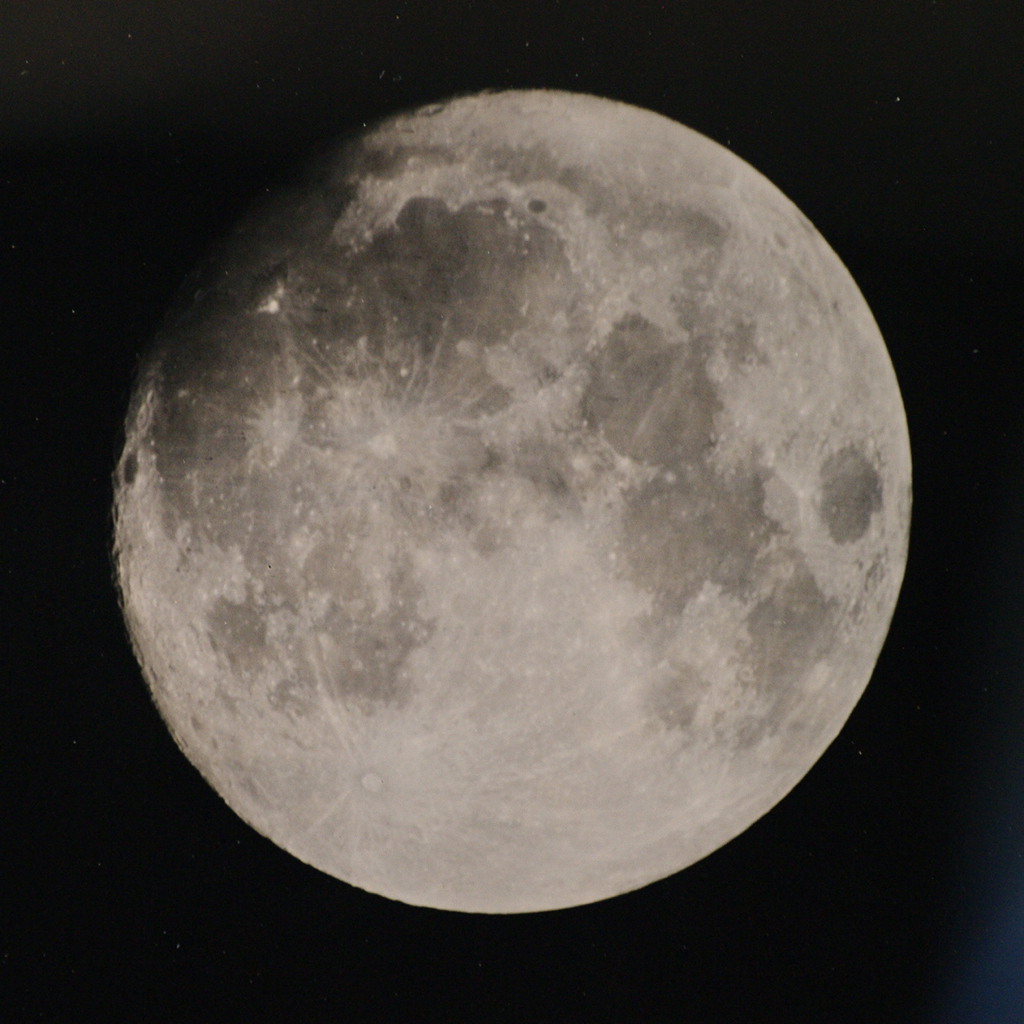用21世纪棉胶湿版法拍摄的月亮
2021年01月02日
21st Century Wet Collodion Moon
Image Credit & Copyright: Mike Smolinsky
Explanation: In the mid 19th century, one of the first photographic technologies used to record the lunar surface was the wet-plate collodion process, notably employed by British astronomer Warren De la Rue. To capture an image, a thick, transparent mixture was used to coat a glass plate, sensitized with silver nitrate, exposed at the telescope, and then developed to create a negative image on the plate. To maintain photographic sensitivity, the entire process, from coating to exposure to developing, had to be completed before the plate dried, in a span of about 10 to 15 minutes. This modern version of a wet-plate collodion image celebrates lunar photography’s early days, reproducing the process using modern chemicals to coat a glass plate from a 21st century hardware store. Captured last November 28 with an 8×10 view camera and backyard telescope, it faithfully records large craters, bright rays, and dark, smooth mare of the waxing gibbous Moon. Subsequently digitized, the image on the plate was 8.5 centimeters in diameter and exposed while tracking for 2 minutes. The wet plate’s effective photographic sensitivity was about ISO 1. In your smart phone, the camera sensor probably has a photographic sensitivity range of ISO 100 to 6400 (and needs to be kept dry …).
Tomorrow’s picture: northern lights
用21世纪棉胶湿版法拍摄的月亮
影像提供与版权: Mike Smolinsky
说明: 在19世纪中叶,用来拍摄月表的第一代造影科技之一是棉胶湿版法,应用此法的代表人物为英国的天文学家沃伦.德拉鲁。使用此法拍照,得在经过硝酸银增敏的玻璃版上,再涂上一层厚厚的透明混合物,然后再用望远镜当曝光源,最后再显影制成负相底版。为了维持感光度,整个为时10到15分钟的过程,得赶在相版干掉之前完成。这幅使用购自21世纪五金店的现代化合物,复制棉胶湿版法摄影过程的现代版照片,目的是要向月球摄影的奠基时期致敬。这幅11月28日用8×10比例相机和后院望远镜拍摄的影像,忠实的呈现盈凸月上的大撞击坑、明亮辐线和黝黑平滑的月海。最后直径8.5公分、曝光时间为2分钟的底版影像,再经过数位扫描成为上图的影像。这种湿版的有效感光灵敏度,大约是ISO 1。对比之下,你手机里的相机,感光灵敏度介于ISO 100到6400,而且不能进水…
明日的图片: northern lights

